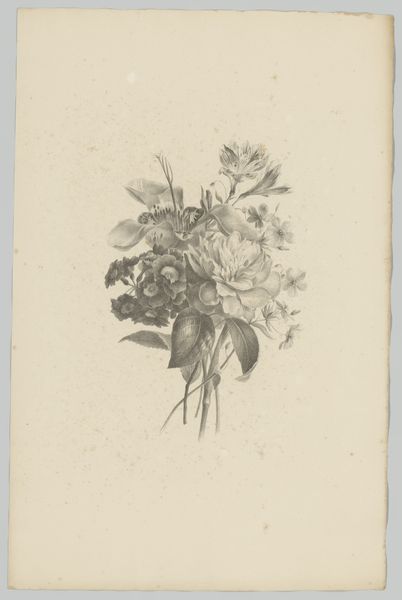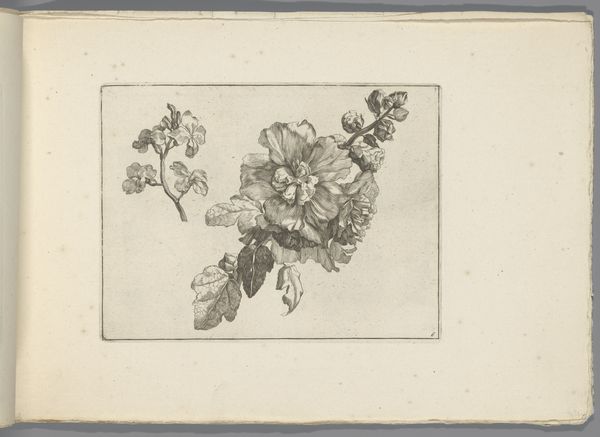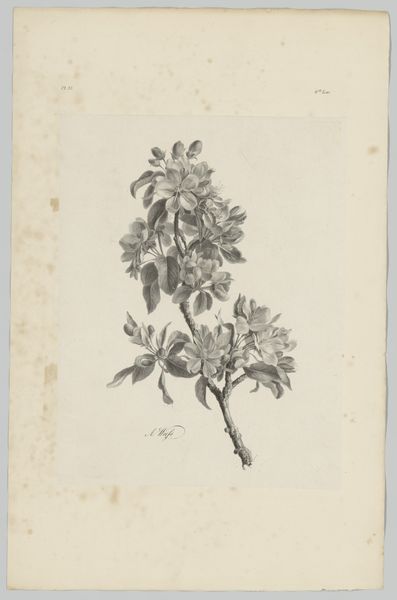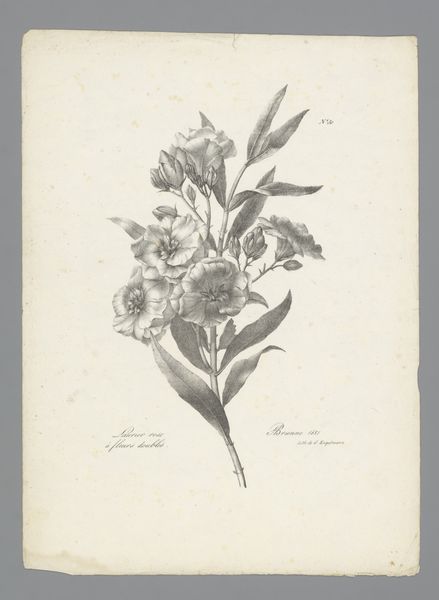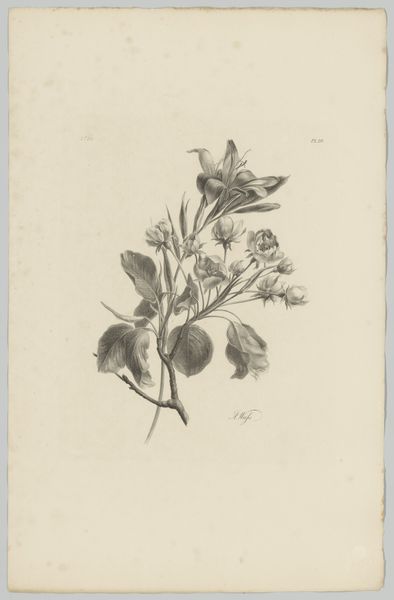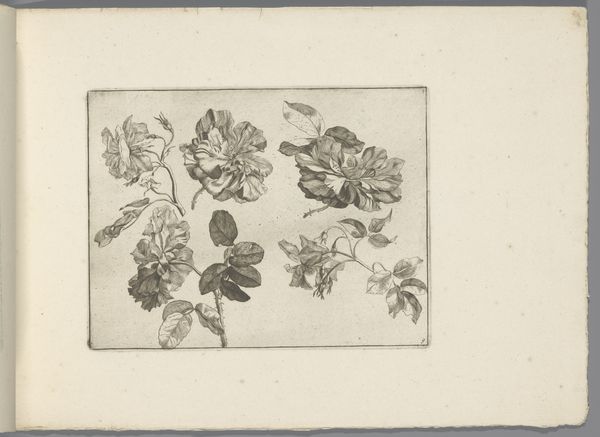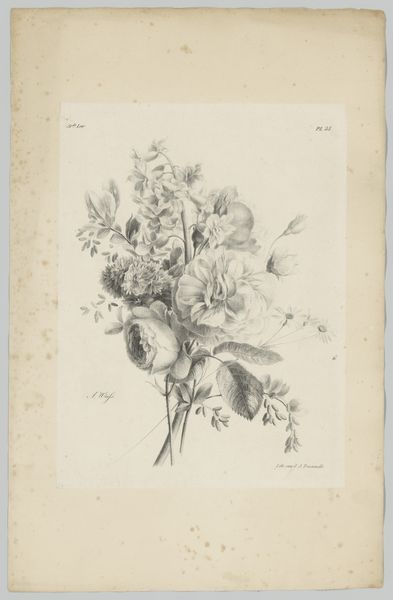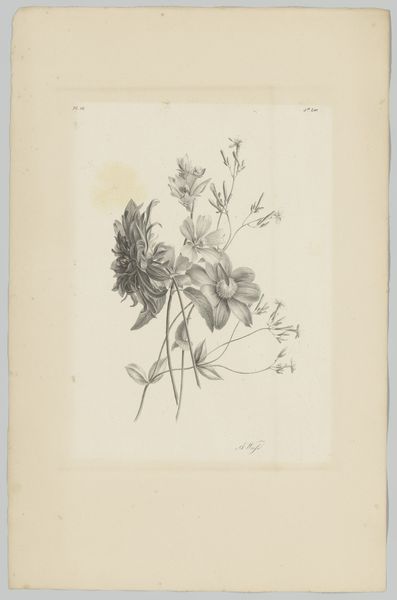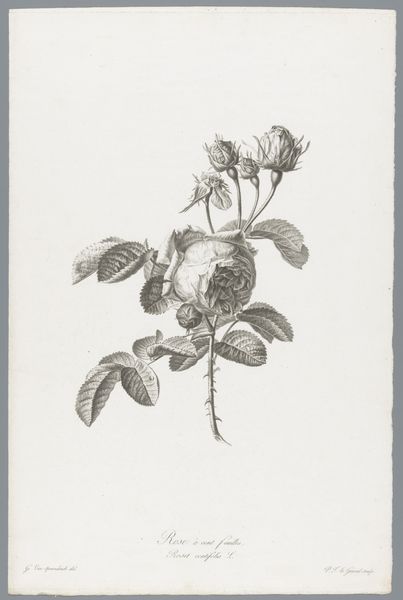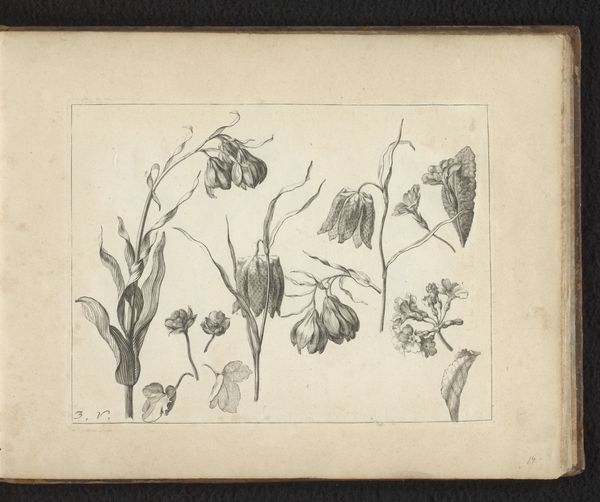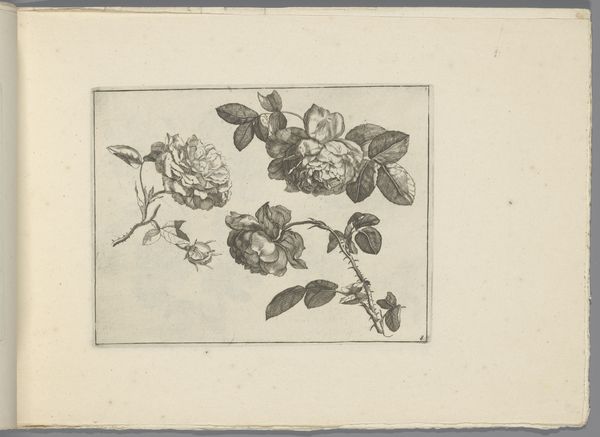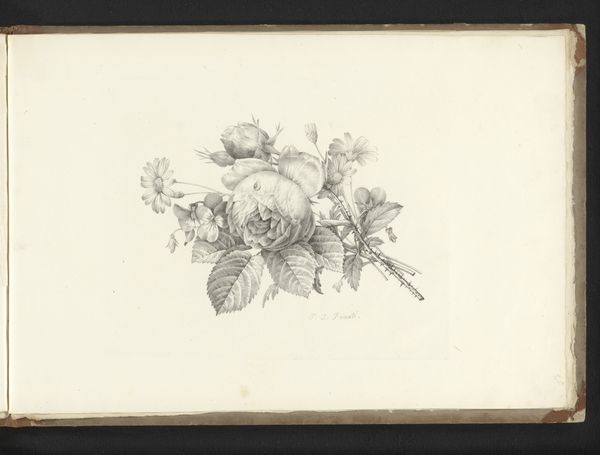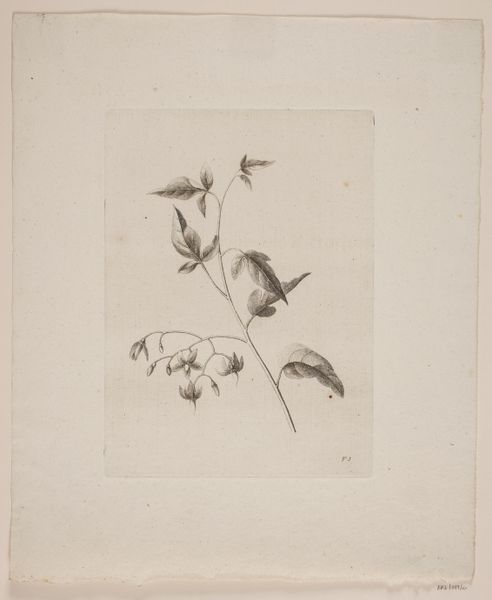
drawing, pencil, graphite
#
drawing
#
flower
#
form
#
coloured pencil
#
pencil
#
line
#
graphite
#
academic-art
#
realism
Dimensions: height 311 mm, width 481 mm
Copyright: Rijks Museum: Open Domain
Editor: Here we have "Bloemen," or "Flowers," a drawing made between 1820 and 1833, currently held at the Rijksmuseum. The artist is Anton Weiss, and it appears to be graphite, pencil, and colored pencil on paper. There's something so delicate about the linework; it's realistic yet slightly melancholic. What do you see in this piece? Curator: I see a careful study, steeped in the language of flowers that flourished in the 19th century. Each bloom, each leaf angle, carried a symbolic weight. These camellias, for instance. The camellia, popularized in Europe during this period, often represented longing, desire, and unrequited love. Consider the contrast between the full, open bloom and the nascent bud; what emotions do they evoke when placed side-by-side? Editor: That’s interesting! I hadn’t thought about a hidden language within the image itself. It adds another layer to that melancholy I initially sensed. So, the open bloom is the fulfillment of longing, while the bud signifies hope, or perhaps, persistent yearning? Curator: Precisely. Weiss, whether consciously or not, tapped into a shared visual vocabulary. This wasn't merely a botanical illustration; it was a potential message, understood by the viewer through cultural memory. Does that influence your reading of the work? Editor: Absolutely. Knowing the symbolism unlocks a deeper narrative within the drawing. It transforms from a simple depiction of flowers into a story about emotion and connection. It’s like unlocking a code! Curator: Indeed. And remember, even the style—the realism—contributes. Realism insists on observation, on truthful depiction, but it cannot erase the underlying symbolic baggage accumulated over time. Editor: I see. The combination of realism and symbolism creates such a powerful effect. Thank you for shining a light on all of the cultural baggage in "Bloemen." I’ll never look at floral art the same way again! Curator: My pleasure. It's rewarding to uncover those layers. It highlights the enduring power of imagery across time.
Comments
No comments
Be the first to comment and join the conversation on the ultimate creative platform.
